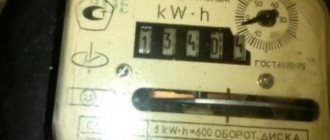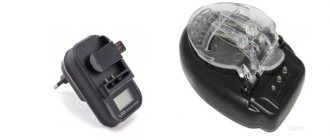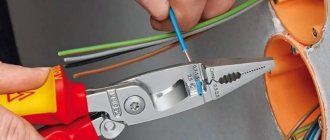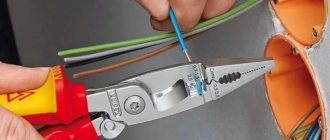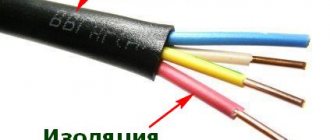Of course, every person on the planet has at least once succumbed to electric shocks when they touched a door handle, car or other objects. Many people ask themselves the question: “What is this? How does it work? Why is this action happening?” One thing we can say is that this is static electricity, which is important to be aware of. This and many other issues on this topic are discussed in this article.
The nature of static electricity
Their school textbooks know that a discharge can only jump between a positively charged object and a negatively charged one. And in most cases, we ourselves are the carriers of the positive charge. Upon contact with a voluminous metal object or another person (since our body is 80% water, the tissues of the human body are a priori excellent conductors of electricity), a discharge occurs, that is, a phenomenon when your body is discharged, otherwise it is freed from its positive charge. But how to remove static electricity without harmful consequences and discomfort? Let us first examine the background of its occurrence.
How to protect yourself from it
Methods of protecting against electricity at work and at home are different. The reason lies in the potential consequences and the necessary measures to prevent the accumulation of a large charge.
In production, to prevent the harmful and dangerous effects of static, a set of the following protective measures is taken:
- preventing the penetration of electric current into the work area;
- increasing the conductivity of materials and the environment;
- increasing the resistance of machines and mechanisms to current discharges;
- reduction in the speed of processing and transportation of materials;
- creation of a full-fledged, well-equipped grounding system.
Attention ! Methods for preventing discharges are divided into two types: reducing the activity of creating static and accelerating the release of energy into the soil.
To eliminate the likelihood of discharges occurring in everyday life, the following measures are applied:
- replacing furniture with antistatic ones;
- the use of wood and other materials for finishing rooms that remove static;
- use of wooden and metal combs and combs;
- woolen clothing is removed slowly;
- wet cleaning;
- silk items are treated with antistatic sprays
- ventilation;
- use of antistatic brushes.
There is no need to install special grounding at home to remove static electricity. But in an enterprise environment it will be necessary. In such equipment, the resistance point should be no higher than 1 megaohm.
Where does the positive charge in our body come from?
Let us explain it in a language that is accessible and understandable to everyone, even those who are not experienced in physics. Material objects accumulate any charge through friction. Each atom that makes up any material body (including the human one) has electrons rotating around its nucleus. Let's give a simple example.
When we take off our clothes over our heads and throw the blouse on the sofa, a large number of electrons, through friction, seem to be erased from their orbits and transferred to the blouse that we took off. It is well known that electrons are negatively charged particles, and therefore our blouse becomes negatively charged, since in its tissues there is now an excess of electrons from our body, while we ourselves become positively charged, since there is now a shortage of negatively charged particles in the tissues.
If we then decide to touch a metal object or another person, we will feel an electric shock. A microscopic lightning discharge will appear between the fingertips of the hand and the object, during which a discharge will occur in the literal sense of the word. Our body, through this discharge, will absorb the missing amount of electrons from this object, and the energy in it will again become balanced. Plus and minus will be balanced again.
How to make antistatic hair
Due to a lack of vitamins, temperature changes and negative environmental influences, hair becomes dry, brittle and electrified. Products and hairsprays that are designed to solve this problem contain aggressive and harmful components.
Such compositions will relieve electrification, but will worsen the health of the hair. Therefore, it is better to make a homemade hair antistatic agent from natural, safe ingredients.
Aromatic oils are a suitable replacement for hair antistatic agents. Add a few drops of any essential oil to clean water. Rose and lavender work well.
Mix and pour into a spray bottle. Apply the product every day. Alternatively, apply a couple of drops of aromatic oil to a wooden comb and comb your hair for five to ten minutes.
Mineral water or plain water with lemon juice in a ratio of 1 to 5 will help eliminate hair electrification. Moisten your hands with the product and run through the strands. A similar result will be obtained if you apply a small amount of cream to your hands and lightly run through your hair.
How does static electricity accumulate in our body?
But in order for an imbalance of charged particles to occur in your body, you don’t have to take something off yourself. Sitting in a car, we rub against the seat. As we walk, clothing can remove some electrons from our body. Any friction helps to transfer a certain amount of electrons from somewhere to something. And now you have already turned into a charged material body, which, upon contact with any conductor (metal or other fairly massive current-carrying object), will definitely discharge, that is, it will absorb the missing electrons from this object through a spark that jumps between you and this object. But how to remove static electricity from yourself and surrounding objects?
Which bedspread is better to choose so that it does not become electrified?
Static can only appear when exposed to a magnetic field. Free charges are around, but their discharge is too weak for it to have any effect on a person. The habitat acquires a large number of sources to generate additional static electricity.
Hairspray will quickly remove static electricity. This method is great if you need an item urgently. It can be used just before going out, but don't forget to wait until it dries.
However, faux fur is susceptible to electrification. In addition, it helps attract and retain dust.
The first and main rule
A sufficiently grounded object will never accumulate static electricity. What does "grounded" mean? This means constant contact with the earth's surface. But in order to “contact the earth’s surface,” the shoes must have conductive soles. At the present time, this is hardly possible, since all modern shoes are made with soles made of synthetic polymers, rubber, rubber, etc.
“But how to remove static electricity from a person in this case?” - you ask. How else can you “ground yourself”? The answer is simple, and it lies in increased air humidity. If the level of air humidity in the room is even slightly higher than usual, the air itself, saturated with moisture, will become an excellent “discharger” for your body. This is why static electricity does not occur when humidity is high, just as it does not occur if you, say, get wet in the rain.
What is static
The situation can be aggravated by dry air in the room or workshop, as well as the presence of reinforced concrete walls. Removing static is a top priority for employees of any enterprise. It is important to properly combat its formation. However, first of all it is necessary to understand the physical laws and reasons for formation.
An electric field is formed by contact between two materials, cutting rolled materials and under the influence of an electric field. The primary production task is effective voltage neutralization.
How to remove static from yourself painlessly?
The spark during discharge is not as painful as it is unpleasant. How to remove static electricity from your body or, more precisely, how to discharge yourself without receiving an unpleasant electric shock? To do this, you need to take any small steel product, such as a nail file, a teaspoon or tweezers, as a result of which the positive potential of your body will spread to them. Next, you should touch the edge of the tweezers to the radiator, car or other massive metal object.
Then the spark will jump not between your fingers and the tweezers, but between the tweezers and the object you touch with them. In this case, you will not experience any negative feelings. You just have to do this over and over again at certain intervals, otherwise sooner or later the charge will accumulate in you again, and you will still receive an electric shock.
Why does a person get electrocuted?
We can say that a person is a kind of electrical system, so he receives an electric shock when there is a large accumulation of electrical charges. This happens for two reasons:
- The body, like a mini-power plant, produces its own electrical currents . They are not felt by humans, and can only be measured with ultra-sensitive instruments. Part of the biocurrents is used to maintain the vital functions of the body, and the excess is converted into static energy.
- Input of static electricity from outside . An electric charge, positive or negative, can accumulate on the surface of any substance (the so-called triboelectric effect). Electrification occurs when objects are heated or cooled, irradiated by energy sources, when a frictional force acts on them. Synthetics, fur, wool, and hair are especially strongly electrified (but cotton fabrics, wood, and glass are not “charged”).
The human body is well electrified. This is facilitated by the lack of grounding, wearing clothes and the fact that his skin is covered with hairs. When a person touches an "uncharged" person with a hand or other part of the body, a discharge occurs, which is manifested by a crackling or tingling sensation. Often bioelectricity of great power hits its owner painfully: he gets an electric shock from everything he touches.
What clothes are prone to the accumulation of static tension?
Many people wonder how to remove static electricity from clothes. The fact is that clothing itself cannot accumulate either a positive or a negative charge. For it to accumulate, there needs to be friction between the pieces of clothing. And friction occurs when wearing clothes, taking them off, etc.
And in these cases, the charge accumulates not in the clothes themselves, but in your body. Only at the moment of parting with clothes can a spark fly between you and a wardrobe item. This is especially true for clothing made from synthetic fibers. Taking a synthetic sweater over your head, you can see with your own eyes the discharges flickering between its fabric, the fabrics of the clothes remaining on you, your hair and your body. This is especially noticeable when the lights are off. Even the air is filled with the smell of ozone, which occurs only during moments of electrical discharges, and the hairs on your head stand on end as they begin to repel each other.
But the piece of clothing that shocked you goodbye does not completely return to your body all the electrons taken from it, and therefore, after such undressing procedures, you always turn into an object with a “plus” sign, which sooner or later will be discharged to “minus”.
To prevent static charge from accumulating while wearing synthetic clothing, you need to wash it with special conditioners that prevent the wardrobe item from collecting electrons from your body. There are many such conditioners, and they are all sold in any household chemical stores.
Methods for getting rid of static on clothes
Most often, static electricity accumulates on synthetic clothing, which causes unpleasant sensations - small current charges, electrified hair, etc.
The following tools will help you cope with the problem:
- antistatic agents, special detergents, antistatic cloths for drying clothes. Modern advances in the chemical industry make it possible to quickly and permanently get rid of the problem, but they must be used regularly if synthetics predominate in your wardrobe;
- baking soda. During washing, add a quarter cup of detergent to the washing machine drum (more can be done, depending on the number of items). Baking soda creates a protective layer that prevents the accumulation of electrons and the appearance of static;
- vinegar. After finishing the main wash cycle, pause the washing machine and add 50 ml of apple cider vinegar. Run the washing machine in rinse and spin mode;
- safety pin. Pin a metal pin to the inside of the garment. A metal that is a good conductor of current will remove the charge of electrons, preventing the formation of static on products. Changes folded in pockets and metal hangers on which things are stored work in a similar way;
- natural fabric. When washing synthetic items, add a couple of cotton or linen items along with them. Natural material will take away the bulk of the static charge.
When washing, place a small ball of foil in the washing machine drum. This will neutralize electrons and prevent static electricity. However, never put foil in the laundry dryer.
"Evil" car
Very often, a static discharge spark jumps between the car and the motorist (passenger). What should you do if your car constantly shocks you? How to remove static electricity from a car so that every time you get out of the car, it doesn’t “bite” you goodbye?
Here the problem, again, lies in you, that is, in your behavior behind the wheel and in the materials from which the car seat covers or the seat itself are made. When you're behind the wheel, you're still moving, creating friction. A charge accumulates in you, and the rubber mats of the car prevent discharge, and the voltage remains in you the entire time you are in the car, until you, getting out of it, touch part of your body to the metal body of the car. At this moment, discharge occurs. There is little pleasant, and therefore you should stock up on special means for treating car seats. These antistatic agents come in the form of aerosols. By spraying this product on your seat covers, you will prevent them from accumulating a positive charge during friction.
But a car is a thing that can itself accumulate static, especially in dry weather. To prevent this from happening and your car not to shock you in vain, buy a special strip (strap) at an auto parts store, which is attached under the rear bumper and is powered to the body of the car. Current types of antistatic straps are even attached to the exhaust pipe. The tip of such a strip, constantly in contact with the ground, will prevent the accumulation of static in the body.
Influence
The most striking manifestation of static electricity can be found in industrial production. Due to his fault, unexpected ignitions of flammable materials occur due to sparks generated when the operator comes into contact with grounded equipment. Electrostatic energy can carry a discharge of 1.4 joules, which is enough to ignite flammable substances.
Interesting ! To prevent such situations, GOST was developed, according to which the accumulated energy from a static charge cannot exceed 40% of the required energy for ignition of substances or materials.
The effect of static electricity affects the hair
Humans are carriers of particles that accumulate on clothing. In this case, the main condition for the accumulation of charge is the presence of shoes with soles that do not allow electricity to leave the body.
A person feels static on himself in the form of prolonged tension or as a momentary discharge. In the first case, there is a slight tension over a long period of time, and in the second there is a short-term release, felt as a tingling sensation. Rarely does the discharge power exceed 7 joules, so electricity does not pose a direct danger, but there is an indirect effect. It manifests itself in the form of muscle contraction, which can cause work-related injuries.
You may be interested in this: Features of calculating capacitance
Attention ! After muscle contraction, body parts can involuntarily become caught in working and moving mechanisms.
Constant discharges begin to affect a person. It becomes more difficult for him to work, irritability and fatigue increase. The rhythm of sleep and the functioning of the nervous system as a whole worsens.
"Evil" computer
The computer itself will not be able to accumulate a static discharge, since its entire body is powered to ground, that is, to minus from the outlet. Therefore, the question of how to remove static electricity from a computer does not make sense in itself. Static electricity, if any household appliance plugged into an outlet shocks you, should be removed not from it, but from you. This is done using the methods described above.
What are the advantages of products manufactured using a static neutralizer?
Timely elimination of static charges allows you to:
- significantly reduce the number of manufacturing defects in relatively simple ways;
- create safe working conditions for operators involved in the maintenance and management of machines;
- optimize the production process, improve the quality of products;
- choose the most suitable equipment to eliminate the formation of static discharges.
Marat Fakhurdinov in his video explains in detail what a static electricity neutralizer is and on what principles it works.
And now I just remind you that it is convenient for you not only to ask a question, but also to express your own opinion about the material you read. Use the comments section.
"Evil" phone
Many phone models have metal parts in their casing, contact with which can also cause a small spark to jump between the gadget and you. The question of how to remove static electricity from a phone has the same explanation, namely, the “plus” accumulates in you, and not in the gadget. Get rid of the accumulated positive charge in your body, and the phone will not “snarl” at you.
Effective struggle in production
There are various methods for removing electrical charges from different materials. However, first of all, it is necessary to assess the voltage level.
In any production environment, very high voltage is inevitable. This can be especially obvious in the production of textiles, various PVC films, foil, and paper. It is important to understand that high electrostatics are often the cause of material fires and work-related injuries.
You can get rid of static by knowing about the interaction of different materials. Positive charges accumulate:
- glass;
- quartz;
- nylon;
- silk;
- air;
- leather;
- asbestos;
- aluminum;
- mica.
Paper, wood, steel, and cotton have neutral charges. Negative charges are distributed over the surface:
- silicone;
- Teflon;
- Selena;
- brass;
- copper;
- nickel;
- latex;
- amber;
- polyurethane;
- polystyrene.
The above knowledge makes it possible to understand how different bodies interact during friction. An example of the interaction of bodies: a person walking on a carpet in woolen socks. In such a situation, the human body will acquire a certain charge. Every car driving on a dry road acquires a charge of about 10 kV. In ordinary life, the potential can be very great. However, in most cases the charge does not have much power and is therefore not dangerous. It is worth knowing that with increased humidity, static current appears less.
If you are working with a semiconductor board, then it is worth ensuring a high charge drain rate. For this purpose, use a floor covering with low electrical resistance. Forced shunting of electrical boards and special tools with a grounded head are also used.
When working with flammable liquids, the vehicle carrying them must be grounded. The aircraft is also equipped with a metal cable. The cable provides reliable protection against accumulated static.
The main methods of protection are:
- removal of accumulated charge into the environment;
- reduction in generation;
- increased conductivity of solids;
- reduction of overvoltage in structures;
- neutralization of charges when using special induction neutralizers in production, as well as modern radioisotope means.
During neutralization, charges are compensated by opposite signs. They are generated by a special device. The enterprise must have protective equipment.
Other measures to reduce the statistical field:
1. Wherever possible, according to production technology, it is important to exclude the spraying of flammable substances, splashing of compounds, and crushing.
2. If technologically feasible, it is necessary to purify flammable gases from suspended solid/liquid particles. In turn, liquids should be cleaned of contamination by impurities.
3. It is necessary to ensure that the speed of movement of materials in devices and production lines exceeds those specified in the project.
Note! In explosive industries, it is recommended to produce any transport and technological equipment exclusively from those materials that have a specific volumetric electrical resistivity of no more than 105 ohm m.


